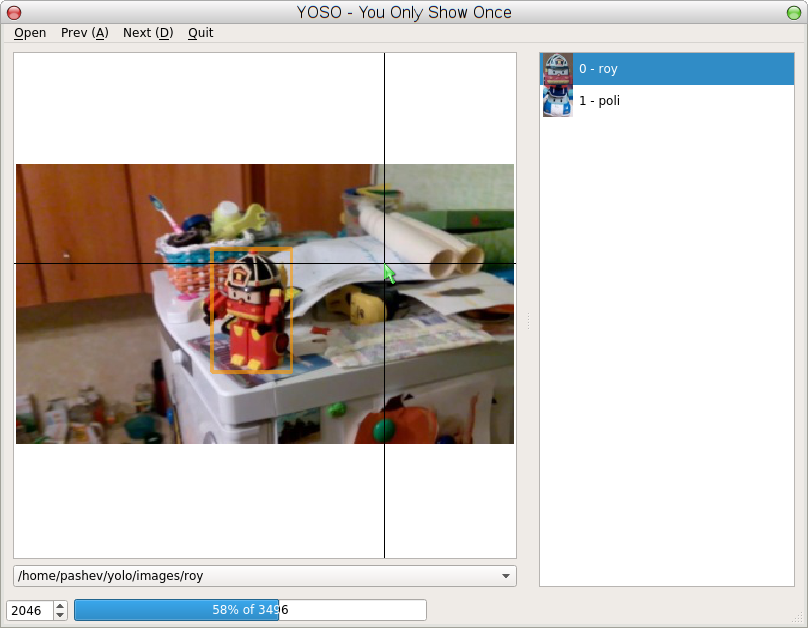You Only Show Once
YOSO is a GUI application providing a means of creating training data set for YOLO, a state-of-the-art, real-time object detection system. It can be useful for other computer vision systems, because I believe that YOLO's label file format is quite a good and flexible choice.
Requirements
- Python 3
- PyQt5
Data Directory Structure
YOSO should be pointed to a data directory having this structure:
data
|\_ classes
| \_ "0 - roy.jpg"
| \_ "1 - poli.jpg"
| \_ ...
|\_ images
| |\_ poli
| | \_ poli-001.jpg
| | \_ ...
| | \_ poli-009.jpg
| | \_ ...
| |\_ roy
| | \_ roy-1.jpg
| | \_ ...
| | \_ roy-99.jpg
| | \_ ...
| \_ ...
\_ labels
|\_ poli
| \_ poli-001.jpg.txt
| \_ ...
| \_ poli-009.jpg.txt
| \_ ...
|\_ roy
| \_ roy-1.jpg.txt
| \_ ...
| \_ roy-99.jpg.txt
| \_ ...
\_ ...
data/classes must contain JPEG files describing object classes in format: <class number> - <short description>.jpg
data/images has arbitrary structure and contains JPEG or PNG images (*.jpg, or *.jpeg, *.png). This is a training set of hundreds or thousands of images.
data/labels is managed by YOSO and has the same structure as data/images. All missed subdirectories will be created automatically. Note that label files create by YOSO have different naming scheme, so you might have to update Darknet sources.
Controls
- To add a bounding box select a region with the mouse pointer. Newly added bounding box will have object class currently selected in the list on the right.
- To delete a bounding box double click on it.
- To change object class drag an item from the list on the right and drop it into existing bounding box.
Whenever a bounding box is added, deleted or changed, the result is automatically saved.
Screenshots

